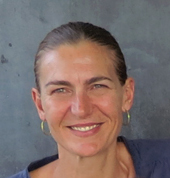
This is a list of caves of in South Africa. A cave or cavern is a natural underground space large enough for a human to enter. The term may refer to sea caves, rock shelters, and grottos.

This is a list of caves of in South Africa. A cave or cavern is a natural underground space large enough for a human to enter. The term may refer to sea caves, rock shelters, and grottos.

Potchefstroom is an academic city in the North West Province of South Africa. It hosts the Potchefstroom Campus of the North-West University. Potchefstroom is on the Mooi Rivier, roughly 120 km (75 mi) west-southwest of Johannesburg and 45 km (28 mi) east-northeast of Klerksdorp. Potchefstroom, together with Rustenburg, is the second-largest city in the North West Province. The largest city, Klerksdorp, is about 45 kilometres (28 mi) away.
Pieter Johannes "Piet" Potgieter was a South African Boer political figure. He was the acting head of state of Zoutpansberg from 1852 to 1854, and the first son of voortrekker Andries Potgieter. He married Elsie Maria Aletta van Heerden, who later married Stephanus Schoeman, a subsequent leader of Zoutpansberg, and acting president of the South African Republic. The town Piet Potgietersrust, now Mokopane, was named in Potgieter's memory in 1907.

Keurboomstrand is a resort town near Plettenberg Bay on the Western Cape of South Africa. It takes its name from the indigenous keurboom tree which grows in the region. The Keurbooms River runs nearby.

Blombos Cave is an archaeological site located in Blombos Private Nature Reserve, about 300 km east of Cape Town on the Southern Cape coastline, South Africa. The cave contains Middle Stone Age (MSA) deposits currently dated at between c. 100,000 and 70,000 years Before Present (BP), and a Late Stone Age sequence dated at between 2000 and 300 years BP. The cave site was first excavated in 1991 and field work has been conducted there on a regular basis since 1997, and is ongoing.
The Klasies River Caves are a series of caves located to the east of the Klasies River mouth on the Tsitsikamma coast in the Humansdorp district of Eastern Cape Province, South Africa. The three main caves and two shelters at the base of a high cliff have revealed evidence of middle stone age-associated human habitation from approximately 125,000 years ago. The 20 metres (66 ft) thick deposits were accumulated from 125,000 years ago. Around 75,000 years ago, during cave remodelling, the stratigraphic sediments were moved out into external middens.
Hilary John Deacon was a South African archaeologist and academic. He was professor of archaeology at the University of Stellenbosch in Stellenbosch, South Africa. His research focused on the emergence of modern humans and African archaeology. He was principal researcher at the Klasies River Caves, one of the oldest known sites of anatomically modern humans, who lived there circa 125,000 years ago.
Janette Deacon is a South African archaeologist specialising in heritage management and rock art conservation. She has studied the changes in stone tools from sites in the southern Cape in relation to climate change over the past 20,000 years. From 1985, she located rock engravings at places where the /Xam informants of Wilhelm Bleek and Lucy Lloyd lived in the nineteenth century. She served as a member of the SAHRA Council and was first chairperson of Heritage Western Cape.

Section 27 of the National Heritage Resources Act (NHRA) of South Africa provides for places of historic or cultural importance to be designated national heritage sites. This came into effect with the introduction of the Act on 1 April 2000, when all former national monuments declared by the former National Monuments Council and its predecessors became provincial heritage sites as provided for in Section 58 of the Act.

The South African Heritage Resources Agency (SAHRA) is the national administrative body responsible for the protection of South Africa's cultural heritage. It was established through the National Heritage Resources Act, number 25 of 1999 and together with provincial heritage resources authorities is one of the bodies that replaced the National Monuments Council.
Mapoch's Caves is a provincial heritage site in Middelburg in the Mpumalanga province of South Africa.

Border Cave is a rock shelter on the western scarp of the Lebombo Mountains in KwaZulu-Natal near the border between South Africa and Eswatini. Border Cave has a remarkably continuous stratigraphic record of occupation spanning about 200 ka. Anatomically modern Homo sapiens skeletons together with stone tools and chipping debris were recovered. Dating by carbon-14, amino acid racemisation and electron spin resonance (ESR) places the oldest sedimentary ash at some 200 kiloannum.
Lyn Wadley is an honorary professor of archaeology, and also affiliated jointly with the Archaeology Department and the Institute for Evolution at the University of the Witwatersrand in Johannesburg, South Africa.

The Slave Lodge is a South African social history museum located in Cape Town. It has been on its present site in the Company's Garden.
Elands Bay Cave is located near the mouth of the Verlorenvlei estuary on the Atlantic coast of South Africa's Western Cape Province. The climate has continuously become drier since the habitation of hunter-gatherers in the Later Pleistocene. The archaeological remains recovered from previous excavations at Elands Bay Cave have been studied to help answer questions regarding the relationship of people and their landscape, the role of climate change that could have determined or influenced subsistence changes, and the impact of pastoralism and agriculture on hunter-gatherer communities.

Lucinda Backwell is an archaeologist and a member of the Academy of Science of South Africa. She obtained her MSc in palaeoanthropology from the University of the Witwatersrand Medical School in 2000. Her PhD in palaeoanthropology was awarded in 2004, making her the first South African woman to be awarded a PhD in palaeoanthropology at a local institution.